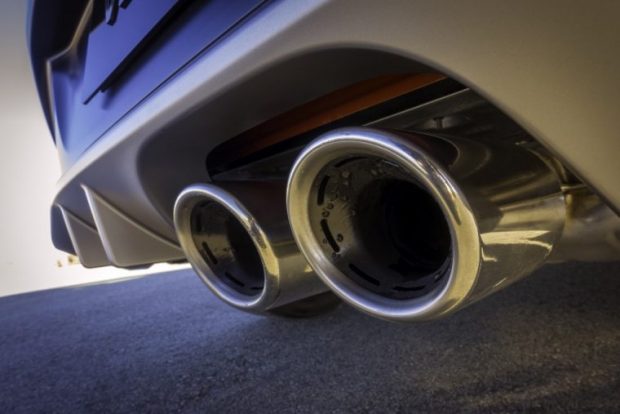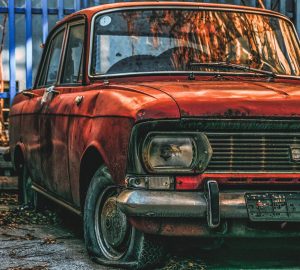
Nothing beats the raspy roar of a performance exhaust system for gearheads looking to modify their vehicles after a flashy set of wheels.
Enhancing airflow to a car’s engine is among the first, and often simplest, modifications that many gearheads make. Not only does the exhaust note add personality to the vehicle, but tinkering with something which also pledges to reveal concealed engine power is almost magical.
When it comes to horsepower and torque, most automobile manufacturers leave some room for development. Though that is not to suggest that these cars are poorly constructed; however, when it comes to things like exhaust systems, many manufacturers choose the least expensive option. An aftermarket performance exhaust can open up some more of your engine’s power.
You’d be mistaken if you assumed a larger exhaust system meant more power. Everything that you need to understand about exhaust systems and how to improve performance is right here.
Benefits of Installing a Performance Exhaust System
Incorporating a performance exhaust system into your car has numerous advantages. These advantages are classified into two groups: vanity and performance. Many people think about the vanity perks of a new exhaust system—the improved sound and style—but they don’t think about what a new exhaust system does for their engine’s effectiveness.
Having installed a performance exhaust system will not only improve the look of your car but will also help it operate more smoothly. Continue reading for a more in-depth look at some of the advantages of installing a high-performance exhaust system in your vehicle.
Higher Fuel Economy: Performance exhaust systems aid in the maintenance of optimal air levels within your vehicle’s engine. These optimal levels minimize the requirement for your engine to burn more fuel to reimburse for dirty air levels. Some people claim to have noticed a significant increase in fuel economy after having installed a high-performance exhaust system.
Increased Horsepower: As previously stated, the purpose of your exhaust is to extract dirty air out from the engine. Simply put, a performance exhaust system does all these tasks more efficiently. If your engine is allowed to inhale better, it can bring in more air upon each cycle, boosting the energy of your engine. When it comes to the parts they install in their vehicles, many vehicle manufacturers want to get the most bang for their buck. This implies that, while these parts are functional, there is normally scope for further improvement.
Style Enhancement: The role of the exhaust system is to eliminate dirty air from the engine. The stock exhaust system on the car will do the job, but it won’t look very good. Attaching a performance exhaust system to the car will enhance its overall appearance. An aftermarket exhaust system, whether made of steel, aluminium, or another material, will make your vehicle sound and look like a sports car.
Sound Improvement: Replacing a performance exhaust system will improve the sound of your exhaust. You recognize them: deep, rumbling, and incredibly cool. The sound will differ depending on the exhaust system you end up choosing. A performance exhaust system sounds more compelling than that of stock systems. This roaring sound is produced by using slightly larger pipes than a typical stock model.
Increase in Downforce: Red Bull’s F1 secret weapon: Honda makes the difference here. What distinguishes the Honda engine is that it continues to burn a small amount of gasoline after the accelerator pedal is released. This increases fuel consumption while allowing the hybrid system to generate more electricity. As a result, the extra power from the hybrid system can be supplied for a longer period of time.
Another useful feature of the Honda engine is the exhaust fumes. Honda has relocated the two exhaust pipes under the upper arm of the suspension system to create a small blow-off to increase current extraction from the central diffuser extractor, resulting in a slight increase in downforce.
What is the Purpose of a Performance Exhaust?
Theoretically, your car’s exhaust system is made up of several parts. Starting with the engine, there’s the exhaust manifold (or headers, if you’ve installed them), the downpipe, the catalytic converter, the resonator, and the muffler. However, the name ‘performance exhaust’ usually corresponds to the portion that includes the ‘cat’ and the muffler. Since they substitute the piping after the catalytic converter, some aftermarket exhausts are referred to as ‘cat-back’ exhausts.
A performance exhaust, like cold-air intakes and headers, is designed to improve airflow and increase engine output. And the primary way to do so is to improve scavenging.
When the intake and exhaust valves open and close, air flows enter and exit the combustion chamber. However, if your car’s exhaust system is too stringent, the exhaust gases can leak back in because of back-pressure in the piping. This may appear to be a minor annoyance, but it can actually cause more problems. This minimizes the amount of available oxygen and thus the horsepower. So, it’s better if you’re aware of the common symptoms of exhaust leak symptoms or exhaust leak as well as the cost of repair. Do proper research online before you hand your car over to a mechanic.
The excellent performance exhausts, on the other hand, are intended to develop partial vacuums as well as reduce backpressure. So the exhaust gases are not only flowing faster, but they are also being sucked, or ‘scavenged’ out. Because the combustion chamber now has more oxygen, the engine produces more power. At least, in theory.
What Are the Different Parts of an Exhaust?
Header/Exхaust Manifold: After the exhaust gases escape the cylinder head, it’s the first contact point for them. It’s also a popular upgrade, with heavy cast manifolds being replaced with tubular headers. Updating to an exhaust header generally entails expanding the diameter of the exhaust piping and also raising exhaust scavenging by aligning the exhaust pulses in a favourable manner.
Resonator: Though it is not a required component of exhaust, it is frequently included because it aids in noise reduction. Resonators operate by rejecting and nullifying the sound waves, and they’re usually tweaked for a specific frequency where engine noise is loud or unacceptable.
The catalytic converter: This is the piece of equipment that allows you to continue breathing while in Los Angeles. It “converts” the received NOx, CO, and unburned hydrocarbons from the exhaust into far less hazardous N2, CO2, O2, and H2O.
Muffler: Mufflers come in a variety of styles, but the aim is the same: to reduce noise. One of the most prevalent methods is to redirect the airflow. The exhaust is routed via porous pipes, which enable the exhaust gases to enlarge into sound deadening material, reducing the noise that eventually exits the tailpipe.
Piping: It is preferable not to have your exhaust gases pump directly beneath your car, going to fill your cabin with vapours. To route the air somewhere else, you’ll need to get some pipes. It’s sometimes necessary to change your car’s cabin air filters.
The Three Main Types of Silencers
The three main types of silencers are reactive, absorptive, and reflective.
The absorption silencer: A perforated tube goes through a volume filled with sound-absorbing fibrous material like mineral and otherwise glass-fibre wool in an absorption silencer. The vibrations are converted into heat, which dissipates the sound energy. A reactive silencing component is a reverberating compartment or tube surrounding the flow of exhaust gas which is adapted to cancel specific frequencies produced by the exhaust pulses.
The reflective silencer: A reflective silencer creates waveforms in the flow of gasses which are reflected by internal baffles, cancelling out incoming waveforms. These are the most flow-restrictive and thus have the highest insertion loss. Restrictive silencers are frequently blamed for poor performance, but the data trace shows that with careful design, efficiency losses can be minimized.
Take Your Exhaust Seriously
Consider tubular exhaust manifolds, also known as headers, for your car when you’re prepared to take your exhaust upgrade to another level. The benefit is that most companies make their headers from mandrel-bent tubing, which enables very smooth interior surfaces. Exhaust gases can move through the tubing with much less turbulence than that in a stock manifold, resulting in improved flow from the engine to the tailpipe.
Steel is the most commonly used material for headers, but aluminium is often utilized to save weight. A few companies are offering headers with a ceramic heat barrier to help keep the engine compartment cool. The ceramic coating protects the headers from rust and corrosion, allowing them to last longer.
What is Back Pressure?
Back pressure is frequently referred to as a vital measure of improved performance in the framework of high-performance exhaust system architecture. Back pressure is the pressure assessed within the exhaust system, typically between the engine and the final silencer. It is conveyed as the pressure above atmospheric pressure in units such as psi (pounds per square inch), bar, Kpa, and so on.
The act of combustion and the pumping action of the pistons on the exhaust stroke of the cycle affect the hot exhaust gases leaving the engine to be pushed down the exhaust pipe and silencers. The volume of the exhaust pipe, number, type, and radius of any bends, as well as any prohibitions induced by silencers (mufflers) and catalytic converters, all contribute to the backpressure.
How Does It Affect Engine Performance?
Backpressure is one of the rapacious losses in the internal combustion system known as the pumping loss. This is the power lost by the engine as a result of the hard work required to pump waste gasses away from the engine and out the exhaust pipe.
Backpressure should always be calculated with gas velocity. If having as little backpressure as possible is important for engine efficiency, why not just run the largest exhaust pipe possible to the back of the car? Bernoulli’s theory states that as gas velocity increases, so does pressure. When a pipe is too large for a given gas flow, velocity drops, increasing the likelihood of turbulent non-laminar flow pressure.
Turbocharged Engines and Back Pressure
Because of the pressure loss between the manifold (before the turbine) and the exhaust system, turbocharged engines yield an even higher flow of gases, necessitating larger pipes, and lower back pressure in the exhaust will assist drive the turbine quicker (after the turbine). The turbine on its own inhibits any reverse pressure pulses in the downstream system from affecting the efficiency of the combustion chamber.
The term “insertion loss” refers to the impact that each component of the exhaust system has on total pumping loss. As a result, adding a silencer would result in an insertion loss equal to the transformation in back pressure created by its addition.
Determine the Type of System You Require
For many vehicles, aftermarket exhaust systems are available in a variety of configurations. People frequently opt for a cat-back system. This system substitutes the whole exhaust system behind the catalytic converter while keeping the converters and stock exhaust manifolds.
These systems are frequently used to add slight power and plenty of exhaust notes to a vehicle. The car sounds nice, but it isn’t very fast. Full exhaust systems are popular, but they swap everything from the manifolds. Most only replace the pipe, catalytic converters, and exhaust pipe, not the manifold itself.
Such systems are much more free-flowing than stock exhausts and will sound fantastic on your vehicle. All of these mechanisms are engineered to bolt on easily, but rusted bolts or broken exhaust hangers can slow the process down.
Completely Customized Systems
The final step in the personalized exhaust system journey is full custom exhaust systems. An exhaust shop will build the system from the ground up for you, fastening it together as they assemble it on the vehicle, and they will work with you to achieve the performance gains you desire from the system. Most shops will not make headers for you, but they will assist you in selecting one that is appropriate for your vehicle.
Everything from the diameter of the exhaust pipe to the configuration of the catalytic converters as well as mufflers can affect how the system functions. Discuss your goals with the tech who will be performing the work so that you are both on the same page.
Number of Exhausts That Can be Used in F1
Ferrari, Honda, Mercedes, and Renault, as Formula 1 engine manufacturers, will be required to design and produce the exhaust and system behind it beginning in 2021. When the new regulations were being drafted, all of the top teams in motorsport came to an agreement on this. It is a new cost-cutting measure for racetracks. So far, the teams have been able to design their own exhaust system. In recent years, this has resulted in a true arms race. The teams went to extremes with expensive materials and special constructions. Of course, there was a cost involved.
To save money, it was declared to include the exhaust system in the list of engine components beginning in 2021. According to Article 23.3.a of the new rules, there will be a limit on the number of exhausts that can be used per year.
At the moment, Formula One teams use a variety of exhausts, and there are some differences between sessions. This will be obsolete by 2021 because only eight identical (!) exhausts per car can be used each year. As a result, development during the season is also impossible. Anyone who requires more than eight exhausts per year will face a five-place grid penalty.
Conclusion
While most people do not start with the exhaust when changing performance parts in their car, ignoring it can be a mistake due to the significant potential to add power through this single system. Whatever path you take, an aftermarket exhaust will improve the performance, appearance, and sound of your car or truck. Whether you want show-quality looks, more power, or both, the right exhaust system can transform your car or truck.



